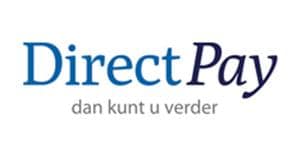Making debt collection less painful
Data visualization and analytics help DirectPay improve client relationships, better manage risk and maximize repayment potential
Practically everyone has some level of debt. When consumers get too far behind and are unable to make payments on time, a debt management company is there to work through the process and help resolve the issue.
Because debt can be a complex and diverse issue, it is tough to read trends and customer behavior, especially if your main tool is a spreadsheet. Colin Nugteren, the Chief Analytics Officer for DirectPay, used to have a lot of spreadsheets. It’s his job to help DirectPay decide what debt to buy and then how best to collect on it.
“We needed software to visualize current information, explore relationships, provide predictions and display it all on a mobile device for when we are visiting with clients,” Nugteren says. By using visual data discovery tools, the Netherlands-based company gets user-friendly, intuitive explorations and dashboards that help DirectPay’s staff work with data and fuel the company’s growth.
Fast action on both fronts
DirectPay buys portfolios of delinquent invoices or loans from companies like telcos, utilities and online stores. Each portfolio could include millions of delinquent invoices or loans. To set a reasonable bid price, DirectPay needs to know the likelihood that it can collect the money owed by individual customers or debtors. Powerful predictive analytics are prototyped using SAS® Visual Statistics, then put into production using SAS® Enterprise Miner™. In the past, this process might have taken a few weeks or months. Now, Nugteren can do it in days.
After DirectPay makes contact with customers, the company also tries to find the best ways to encourage them to pay. Once again, these types of predictive analytics help. The company studies what types of programs help prevent payment problems and what offers – made soon after a payment is missed – can get the debtor back on track.
SAS Visual Analytics allows employees to just pull out an iPad® and show the clients all the data, face to face, and answer any questions they might have. That exchange of knowledge on a personal basis is crucial.
Colin Nugteren
Chief Analytics Officer
Additionally, DirectPay recently launched a new independent company called DebtScan to find cars that are subject to repossession. (A car can only be repossessed in cases in which a court grants a verdict to enforce debt collection.) DebtScan drivers use cars equipped with cameras that capture license plate data. Using SAS® Analytics, the data is matched against cars owned by people behind on their payments, and the nearest law enforcement office is notified of a car’s location. Analytics software processes the information used to match the license plates against the repossession lists. These results can be visualized to understand where there is a predominance of identified cars. This leads to much more efficient use of the limited amount of repossession resources and a faster recovery of these cars, ultimately leading to a faster capital return to DirectPay.
In search of a better process
Before adopting predictive analytics and SAS Visual Analytics, DirectPay had a vast amount of data about payment behavior that it couldn’t use effectively. The IT department alone had access to the data warehouse system, so all information requests had to go through them. “We were always behind,” Nugteren says. “Now we have relevant data available every day, every hour, every minute.”
When visiting with potential and current clients, employees can interact with information on their tablets or mobile phones and answer questions easily. They can track their metrics and follow how well their collection efforts are working. “SAS Visual Analytics allows employees to just pull out an iPad® and show the clients all the data, face to face, and answer any questions they might have,” Nugteren says. “That exchange of knowledge on a personal basis is crucial.”
Geomapping helps the company quickly see areas of high delinquency, which aids in deploying the DebtScan cars in the right geographic locations. “I wake up, and I look at so much information that is really interesting,” he says. “It’s a real difference, and it makes you feel much more connected. That is something I never expected software to achieve.”
It even helps the company maintain a better relationship with debtors. Agents know how often they’ve contacted an individual, who is responding and who isn’t. “When we treat them in a friendly manner, they share more information,” explains Nugteren. “They proceed with payments sooner, which in turn leads to more revenue for DirectPay.”

Challenge
- The company needed to determine what debt to buy and how to best collect it.
- Estimates of potential debt portfolios for purchase were time-consuming to assemble.
- Staff couldn’t access, analyze and share information quickly.
Solution
Benefits
- Complete view of customers for individualized decisions in the entire debt-collection process.
- Ability to manage risks at debtor level to be profitable.
- Information is available to every employee to collectively decide on best action.
About DirectPay
DirectPay specializes in the field of debtor management and credit management in the Netherlands.

